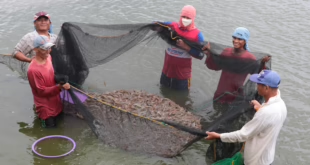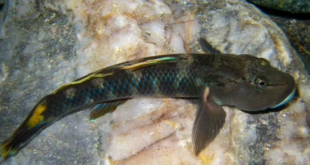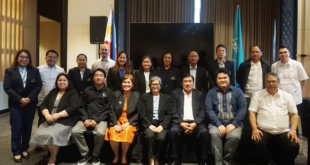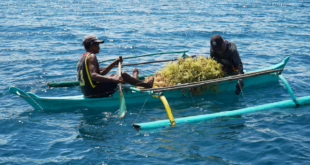By Development Communication Section
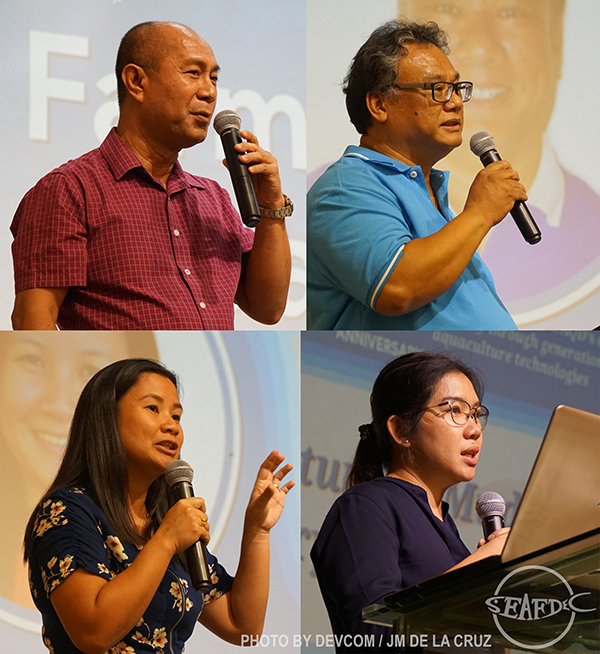
TIGBAUAN, Iloilo – As part of SEAFDEC/AQD’s anniversary celebrations, a Farmers’ Forum and Aquaculture Clinic were held for fish farmers and the private sector that updated them on important aquaculture updates on bangus fry sufficiency, shrimp hatchery management, hatchery technology for mangrove crab, and the need to culture mud worms.
The Forum attended by more than 100 participants was held on 10 July 2019 at SEAFDEC/AQD’s Multi-Purpose Hall in Tigbauan, Iloilo from 8 a.m. to 3 p.m.
National Bangus Fry Sufficiency Program
Dr. Edgar Amar, head of the Training and Information Division, shared to the attendees that there is a scarcity of milkfish fry in the Philippines and that the solution to address this problem is to increase the local fry production through the “Bangus Fry Sufficiency Program” of the Philippine government.
With this program, Dr. Amar said there will be centralized broodstock facilities where broodstock maintenance will be supported by the government and central and satellite hatcheries will focus on egg and fry production, respectively.
“This program also offers lower investment requirements to encourage private hatcheries to consider this aquaculture venture,” said Dr. Amar, adding that one of the roles of SEAFDEC/AQD in this particular program is to train technical staff to be deployed in the legislated multi-species hatcheries nationwide wherein there is currently 19 trained technical staff.
In addition, SEAFDEC/AQD will serve as the Central Hatchery that will supply the milkfish egg requirement of satellite hatcheries in Region 6 as well as provide technical assistance in the operation of the satellite hatcheries to the Bureau of Fisheries and Aquatic Resources Region 6.
Shrimp hatchery management
On the other hand, Dr. Leobert de la Peña, head of the Research Division, gave updates on shrimp hatchery management where he presented the shrimp hatchery and spawner/broodstock facilities at SEAFDEC/AQD.
Dr. de la Peña also shared how biosecurity measures are practiced in these facilities such as the use of foot bath and hand sanitizer, disinfection of tanks and paraphernalia, installation of black sacks in between tanks to minimize contamination, and use of UV-sterilized seawater. He also shared the larval rearing protocol being done at SEAFDEC/AQD which stopped common viruses from affecting shrimps.
Mudworm culture
Associate Researcher Mary Anne Mandario, on the other hand, presented the hatchery set-up and operation of mudworm at SEAFDEC/AQD and introduced to fish farmers the importance of mudworm Marphysa sp. in aquaculture and why there is a need to culture this marine annelid locally known as ulod-ulod.
“Mudworm has many uses in aquaculture. It is used in bioremediation and environmental monitoring studies, used as feed for shrimp broodstock to improve reproductive performance and is a good alternative protein and lipid source in crustacean diets,” said Ms. Mandario who further explained that depletion of the natural population of mudworms and the destruction of their natural habitat can also be prevented.
The natural habitats of mudworm are mangrove mudflats and brackish water ponds but there is a need to culture it to have a stable supply for aquaculture use. Moreover, cultured mudworm have improved nutrient quality and are pathogen-free.
Mangrove crab hatchery
Lastly, Ms. Joana Joy Huervana, associate researcher, talked about the hatchery technology for mangrove crab and explained that among the advantages of hatchery-reared crabs is that sizes of crablets are similar and are available throughout the year as well as the growth of hatchery-reared crabs being comparable to wild crabs.
Ms. Huervana also shared to the fish farmers the feeding and water management protocol for larval rearing practiced at SEAFDEC/AQD and emphasized that to increase the supply of crablets, the private sector should invest in a crab hatchery especially in areas where the crabs are cultured.
Aside from the lectures, the participants were also able to consult SEAFDEC/AQD experts during the Aquaculture Clinic regarding different problems and other concerns that they encountered in their farms.
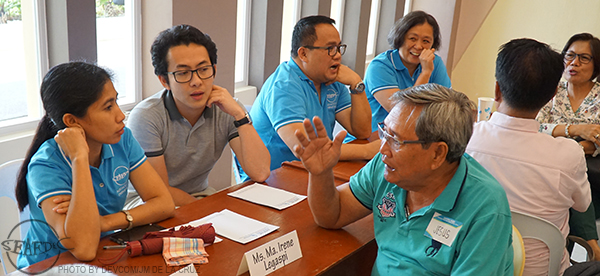

 SEAFDEC/AQD Southeast Asian Fisheries Development Center | Aquaculture Department
SEAFDEC/AQD Southeast Asian Fisheries Development Center | Aquaculture Department
